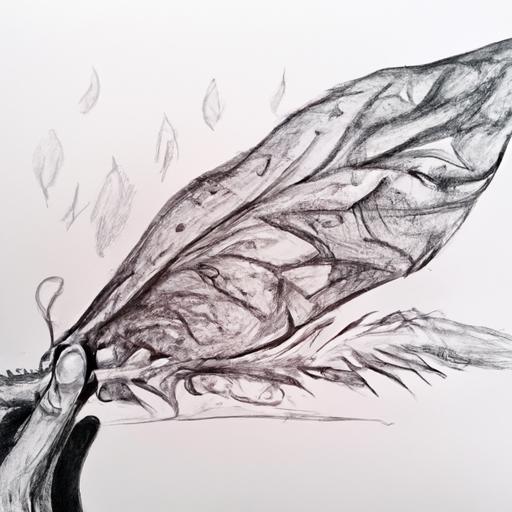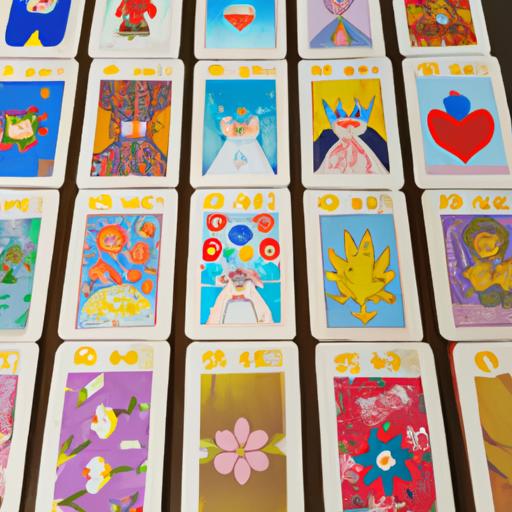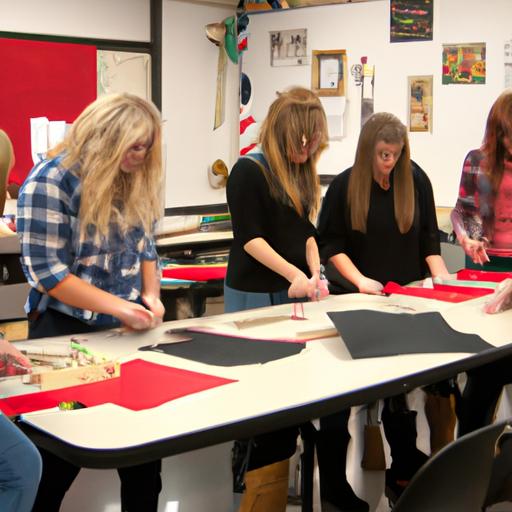Visual arts in high school have become more than just a subject on the curriculum; they are a doorway to self-expression, creativity, and personal growth. As you embark on your journey through high school, have you ever wondered what visual arts truly encompass and why they hold such significance in your education? In this article, I will shed light on the definition of visual arts and delve into the importance they carry in high school education.
A. Definition of Visual Arts
Visual arts encompass a wide array of artistic disciplines that involve creating, appreciating, and understanding visual aesthetic expressions. These include drawing, painting, sculpture, photography, printmaking, design, and more. It’s a realm where imagination takes shape, colors come alive, and ideas are brought to life through various mediums and techniques. Visual arts in high school provide a platform for students to explore their creativity, experiment with different artistic forms, and develop their artistic voice.
B. Importance of Visual Arts in High School Education
Visual arts play a vital role in high school education, going beyond the realm of creativity. They contribute to a well-rounded education by fostering skills and qualities that are essential for personal and academic development. Engaging in visual arts cultivates critical thinking, problem-solving abilities, and the capacity to analyze and interpret visual information. It encourages students to think outside the box, explore alternative perspectives, and develop their own unique artistic style.
Moreover, visual arts in high school provide an avenue for self-expression and serve as a medium for students to convey their thoughts, emotions, and experiences. Art has the power to transcend language barriers and communicate on a deeper level, enabling students to express themselves authentically. This creative outlet nurtures self-confidence, self-esteem, and resilience, empowering students to embrace their individuality and find their voice in a world that often imposes conformity.
In addition, visual arts education in high school fosters cultural appreciation and understanding. It exposes students to diverse artistic traditions, styles, and historical contexts, expanding their cultural horizons and encouraging them to appreciate the beauty and richness of different cultures. By exploring art from various eras and cultures, students gain insights into the values, beliefs, and societal norms that shape our world, promoting tolerance and empathy.
Now that we have established the definition of visual arts and recognized their significance in high school education, let’s delve deeper into the visual arts curriculum and the benefits it brings in Section Join me as we embark on an artistic adventure that will enrich your high school experience and broaden your horizons.
Visual Arts Curriculum in High School
A. Overview of Visual Arts Curriculum in High Schools
The visual arts curriculum in high schools is designed to provide students with a comprehensive understanding of artistic concepts, techniques, and theories. It offers a structured framework that allows students to explore their creativity, develop technical skills, and gain a deeper appreciation for art. The curriculum typically covers a range of artistic disciplines, ensuring students have a well-rounded experience in visual arts.
B. Various Mediums and Techniques Taught in Visual Arts
High school visual arts programs expose students to a variety of mediums and techniques, allowing them to experiment and discover their artistic preferences. From traditional mediums such as drawing and painting to digital art, sculpture, ceramics, and photography, students have the opportunity to explore different forms of artistic expression. This diverse range of mediums enables students to develop a versatile skill set and broaden their artistic horizons.
Furthermore, the curriculum emphasizes the mastery of various techniques, such as shading, perspective, color theory, and composition. Students learn how to manipulate these elements to convey their artistic vision effectively. Through hands-on projects and assignments, they develop technical proficiency and gain a deeper understanding of the artistic process.
C. Integration of Art History and Theory in the Curriculum
An integral part of the visual arts curriculum in high school is the integration of art history and theory. This component allows students to contextualize their artistic creations and gain insight into the historical and cultural significance of different art movements. By studying renowned artists, art styles, and periods, students acquire a deeper understanding of the evolution of art and its impact on society.
Art history and theory classes provide students with the knowledge and critical thinking skills to analyze and interpret artworks. They learn to appreciate the nuances of artistic expression, understand the cultural context in which artworks were created, and make connections between art and societal issues. This integration of art history and theory enriches students’ artistic practice, inspiring them to create meaningful and thought-provoking artworks.
In the next section, we will explore the myriad benefits that visual arts education brings to high school students. From fostering creativity to enhancing critical thinking skills, visual arts play a transformative role in shaping students’ overall development. Join me in Section III as we uncover the remarkable advantages of engaging in visual arts education.
Benefits of Visual Arts Education in High School
Art has the power to transform and shape lives, and visual arts education in high school offers a multitude of benefits that extend far beyond the canvas. Let’s explore some of the remarkable advantages that come with engaging in visual arts.
A. Enhances Creativity and Self-Expression
Visual arts provide a unique platform for students to unleash their creativity and tap into their imagination. Through various artistic mediums and techniques, students are encouraged to explore different avenues of self-expression. They learn to think outside the box, push boundaries, and create art that reflects their unique perspectives and experiences. Engaging in visual arts nurtures innovation, as students learn to find creative solutions to artistic challenges, fostering a mindset that can be applied to other aspects of their lives.
B. Develops Critical Thinking and Problem-Solving Skills
Visual arts education in high school fosters critical thinking and problem-solving abilities. As students engage in artistic creation, they are required to make informed decisions, analyze visual information, and evaluate their work critically. They develop the capacity to observe details, interpret visual cues, and make thoughtful choices regarding composition, color, and form. These skills extend beyond the art studio and become valuable assets in academic pursuits and real-life situations, enabling students to approach challenges with a creative and analytical mindset.
C. Boosts Confidence and Self-Esteem
Engaging in visual arts empowers students to embrace their unique artistic voice and builds their confidence. Through the process of creation, students overcome artistic obstacles, learn from mistakes, and witness their growth as artists. The positive feedback and encouragement received from teachers, peers, and the larger artistic community provide validation and reinforce their self-worth. This boost in confidence not only enhances their artistic abilities but also extends to other areas of their lives, allowing them to tackle challenges with newfound self-assurance.
D. Fosters Cultural Understanding and Appreciation
Visual arts education in high school exposes students to a diverse range of artistic traditions, styles, and cultural contexts. By exploring art from different periods and cultures, students gain a deeper appreciation for the rich tapestry of human expression. They learn to recognize the value of diversity, develop empathy, and embrace alternative perspectives. The exploration of art history and the examination of different artistic movements broaden their cultural horizons and foster a deeper understanding of the interconnectedness of humanity.
In the next section, we will explore the role of visual arts in high school students’ overall development. Join me as we discover how visual arts can have a profound impact on academic, social, and emotional growth in Section
Role of Visual Arts in High School Students’ Overall Development
Visual arts education in high school goes beyond the canvas and brushstrokes; it plays a significant role in shaping students’ overall development. Let’s explore how visual arts impact their academic journey, foster social and emotional well-being, and open doors to exciting career opportunities.
A. Academic Impact of Visual Arts Education
Engaging in visual arts education in high school has a profound impact on academic performance across various subjects. Studies have shown that students who participate in visual arts tend to excel in areas such as math, science, and language arts. The skills developed through visual arts, such as observation, analysis, and critical thinking, enhance cognitive abilities and facilitate learning in other disciplines. Visual arts also encourage interdisciplinary thinking, enabling students to make connections between art and subjects like history, literature, and even STEM fields.
B. Social and Emotional Benefits of Engaging in Visual Arts
Visual arts provide a safe space for students to explore their emotions, express their thoughts, and develop a sense of identity. Through creative self-expression, students can navigate complex emotions, relieve stress, and develop coping mechanisms. Engaging in art forms like painting, drawing, or sculpting allows students to channel their emotions into tangible creations, fostering self-awareness and personal growth.
Furthermore, visual arts education encourages collaboration and communication. Group projects and critique sessions promote teamwork, empathy, and constructive feedback, enhancing interpersonal skills. Students learn to appreciate diverse perspectives and respect different artistic styles, fostering a sense of community and inclusivity.
C. Career Opportunities and Pathways in the Visual Arts Field
Visual arts education in high school can open doors to a myriad of exciting career opportunities. The skills acquired in visual arts, such as creativity, problem-solving, and visual literacy, are highly sought after in various industries. Students can pursue careers in fields such as fine arts, graphic design, illustration, animation, advertising, and museum curation, to name a few. Visual arts education also provides a solid foundation for higher education in art-related disciplines, allowing students to pursue degrees in fine arts, art history, or design.
Whether students choose to pursue a career in the arts or not, the skills developed through visual arts education are transferable and valuable in any field. Employers recognize the creative thinking, adaptability, and perseverance instilled by visual arts, making visual arts education an asset in today’s competitive job market.
As we have explored the role of visual arts in high school students’ overall development, it is clear that visual arts education extends beyond the confines of the classroom. Now, let’s address the challenges faced in teaching visual arts in high school and discover the solutions in Section
Challenges and Solutions in Teaching Visual Arts in High School
Teaching visual arts in high school comes with its own set of challenges, but with innovative solutions, these challenges can be overcome, ensuring a vibrant and enriching artistic education. Let’s explore some common challenges faced in teaching visual arts and the strategies employed to address them.
A. Limited Resources and Budget Constraints
One of the key challenges in teaching visual arts is the limited availability of resources and budget constraints. Art supplies, equipment, and specialized tools can be costly, making it difficult for schools to provide ample materials for students to explore their creativity. However, resourcefulness and creativity can be harnessed to overcome this challenge. Teachers can seek alternative, cost-effective materials or repurpose existing resources to create engaging art projects. Collaboration with local art organizations, businesses, and community members can also help procure additional resources through donations or sponsorships. By engaging in creative problem-solving, educators can ensure that students have access to the necessary tools and materials while staying within budgetary limitations.
B. Overcoming the Perception of Visual Arts as a Non-Essential Subject
Another challenge in teaching visual arts is the perception that it is a non-essential subject, often overshadowed by more traditional academic disciplines. This perception can limit the support and recognition that visual arts programs receive. To address this, educators and advocates must emphasize the value and benefits of visual arts education. They can showcase examples of successful individuals who have pursued careers in the arts, highlighting the transferable skills gained through artistic endeavors. It is essential to emphasize that visual arts foster creativity, critical thinking, and problem-solving skills that are valuable in various fields of study and future careers. By promoting the importance of visual arts as an essential component of a well-rounded education, we can challenge the notion that it is a secondary discipline.
C. Incorporating Technology and Digital Art in the Curriculum
In today’s digital age, integrating technology and digital art into the visual arts curriculum is vital to engage and prepare students for the ever-evolving creative landscape. Embracing digital tools and software opens up a whole new realm of artistic possibilities. Educators can introduce digital art techniques, such as graphic design, digital painting, and 3D modeling, into the curriculum. By doing so, students can explore the intersection of traditional and digital art forms, expanding their artistic horizons. Additionally, leveraging technology allows for easier access to resources, online tutorials, and virtual exhibitions, providing students with a broader understanding of the global art scene. Embracing technology and digital art ensures that students are equipped with the skills and knowledge needed to thrive in the digital era.
As we navigate the challenges faced in teaching visual arts, it is crucial to remain innovative, resourceful, and adaptable. Overcoming these obstacles not only enriches the artistic education but also empowers students to explore their creativity, develop essential skills, and embrace the ever-evolving world of visual arts. In the next section, we will explore the holistic impact of visual arts on high school students’ overall development.
Conclusion
In conclusion, visual arts in high school offer a gateway to creativity, self-expression, and personal growth. By engaging in various artistic disciplines, students not only enhance their technical skills but also develop critical thinking, problem-solving abilities, and self-confidence. The visual arts curriculum provides a platform for students to explore their artistic voice, experiment with different mediums, and learn from art history and theory.
Beyond the academic benefits, visual arts education in high school has a profound impact on students’ overall development. It nurtures creativity, allowing students to think outside the box and find innovative solutions. It fosters self-expression, helping students to communicate their thoughts and emotions in a unique and powerful way. The cultural appreciation gained through the study of visual arts promotes a sense of empathy and understanding in an increasingly diverse world.
Furthermore, visual arts education opens doors to various career opportunities. Students can pursue careers as professional artists, designers, photographers, art educators, and more. The skills and qualities developed through visual arts education, such as creativity, problem-solving, and critical thinking, are highly valued in many fields and industries.
As you embark on your high school journey, consider the path of visual arts. Embrace the opportunity to explore your creativity, express yourself, and discover the power of art. Visual arts education will not only enrich your high school experience but also equip you with valuable skills that will benefit you throughout your life.
So, why wait? Unleash your imagination, pick up a paintbrush, mold clay, or capture moments through a lens. The world of visual arts awaits you, ready to ignite your passion and broaden your horizons. Embrace the beauty of visual arts in high school, and let your creativity soar to new heights.
Join me in the next section as we explore the visual arts curriculum in high schools, and discover the various mediums and techniques that will bring your artistic endeavors to life.





